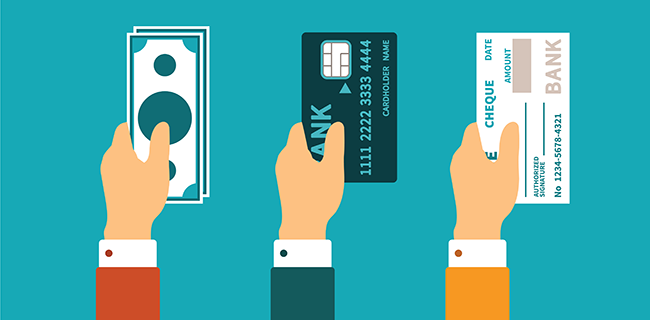
⭐️ គន្លឹះសំខាន់
– តុល្យភាពនៃការទូទាត់ ឬ Balance of Payment (BoP) គឺជាការកត់ត្រាជាប្រព័ន្ធនៃប្រតិបត្តិការសេដ្ឋកិច្ចទាំងអស់រវាងអ្នករស់នៅក្នុងប្រទេសមួយ និងប្រទេសផ្សេងទៀតនៃពិភពលោកក្នុងរយៈពេលជាក់លាក់មួយ។
– BoP ត្រូវបានបែងចែកជាបីផ្នែកសំខាន់ៗ ដូចជា៖ គណនីចរន្ត, គណនីមូលធន និងគណនីហិរញ្ញវត្ថុ។
– សមតុល្យនៃការទូទាត់ត្រូវបានរំពឹងថានឹងមានតុល្យភាព មានន័យថាផលបូកនៃគណនីចរន្ត គណនីដើមទុន និងគណនីហិរញ្ញវត្ថុគួរតែស្មើសូន្យ។
⭐️ ឈ្វេងយល់ពីតុល្យភាពនៃការទូទាត់
តុល្យភាពនៃការទូទាត់ ឬ BoP គឺជាការកត់ត្រាជាប្រព័ន្ធនៃប្រតិបត្តិការសេដ្ឋកិច្ចទាំងអស់រវាងអ្នករស់នៅក្នុងប្រទេសមួយ (ប្រទេសដែលធ្វើរបាយការណ៍) និងប្រទេសផ្សេងទៀតនៃពិភពលោកក្នុងរយៈពេលជាក់លាក់មួយ ដែលជាធម្មតាក្នុងមួយឆ្នាំ ឬមួយត្រីមាស។ វាគឺជាប្រព័ន្ធគណនេយ្យដ៏ទូលំទូលាយមួយដែលតាមដាននូវលំហូរសាច់ប្រាក់ និងទ្រព្យសម្បត្តិសេដ្ឋកិច្ចផ្សេងទៀតរវាងប្រទេសមួយ និងពិភពលោកទាំងមូល។
⭐️ សមាសធាតុនៃតុល្យភាពនៃការទូទាត់
ជាទូទៅ BoP ត្រូវបានបែងចែកជាបីផ្នែកសំខាន់ៗ៖
1. គណនីចរន្ត៖ គណនីចរន្តកត់ត្រានូវប្រតិបត្តិការដែលទាក់ទងនឹងពាណិជ្ជកម្ម ទំនិញ និងសេវាកម្ម ព្រមទាំងប្រាក់ចំណូលដែលទទួលបានពី ឬបង់ទៅឱ្យបុគ្គល និងអង្គភាពបរទេស។ វារួមបញ្ចូល៖
– ការនាំចេញ និងនាំចូលទំនិញ (ពាណិជ្ជកម្មទំនិញ) ។
– ការនាំចេញ និងនាំចូលសេវាកម្ម (ឧ. ទេសចរណ៍ ប្រឹក្សាយោបល់ សេវាហិរញ្ញវត្ថុ)។
– ប្រាក់ចំណូលពីការវិនិយោគ (ដូចជាភាគលាភ និងការប្រាក់) ដែលទទួលបានពីបរទេស និងបង់ឱ្យជនបរទេស។
– ការផ្ទេរឯកតោភាគី (អំណោយ ជំនួយបរទេស ជំនួយ និងការផ្ទេរប្រាក់)។
2. គណនីមូលធន៖ គណនីមូលធនតាមដានពីការផ្ទេរមូលធនជាអន្តរជាតិ និងការទទួលបាន ឬការដក/លក់ចេញនូវទ្រព្យសម្បត្តិដែលមិនមែនជាទ្រព្យសកម្ម ដូចជាប៉ាតង់ ការរក្សាសិទ្ធិ និងពាណិជ្ជសញ្ញា។ វាក៏រួមបញ្ចូលផងដែរនូវប្រតិបត្តិការទាក់ទងនឹងការលើកលែងបំណុល និងការផ្ទេរកម្មសិទ្ធិនៃទ្រព្យសកម្មថេរ។
3. គណនីហិរញ្ញវត្ថុ៖ គណនីហិរញ្ញវត្ថុកត់ត្រានូវប្រតិបត្តិការហិរញ្ញវត្ថុអន្តរជាតិ រួមទាំងការទិញ និងការដក/លក់ចេញនូវទ្រព្យសម្បត្តិ និងបំណុលហិរញ្ញវត្ថុរវាងអ្នករស់នៅ និងមិនមែននិវាសនជន។ វារួមបញ្ចូល៖
– ការវិនិយោគផ្ទាល់ពីបរទេស (FDI)៖ ការវិនិយោគដែលធ្វើឡើងដោយប្រជាជនរបស់ប្រទេសមួយនៅក្នុងក្រុមហ៊ុនបរទេស និងផ្ទុយមកវិញ។
– ការវិនិយោគផលប័ត្រ៖ ប្រតិបត្តិការក្នុងភាគហ៊ុន មូលបត្របំណុល និងឧបករណ៍ហិរញ្ញវត្ថុផ្សេងទៀត។
– ទ្រព្យសកម្មបម្រុង៖ ប្រតិបត្តិការដែលពាក់ព័ន្ធនឹងទុនបម្រុងប្តូរប្រាក់បរទេសរបស់ធនាគារកណ្តាលរបស់ប្រទេសមួយ។
– ការវិនិយោគផ្សេងទៀត៖ រួមបញ្ចូលប្រាក់កម្ចី ឥណទានពាណិជ្ជកម្ម និងប្រតិបត្តិការហិរញ្ញវត្ថុផ្សេងទៀតដែលមិនត្រូវបានចាត់ថ្នាក់ជា FDI ឬការវិនិយោគផលប័ត្រ។

សមតុល្យនៃការទូទាត់ត្រូវបានរំពឹងថានឹងមានតុល្យភាព មានន័យថាផលបូកនៃគណនីចរន្ត គណនីដើមទុន និងគណនីហិរញ្ញវត្ថុគួរតែស្មើសូន្យ។ ផ្អែកលើគោលការណ៍គណនេយ្យ រាល់ប្រតិបត្តិការអន្តរជាតិ ត្រូវតែមានឥណទាន និងឥណពន្ធដែលត្រូវគ្នា។ ប៉ុន្តែនៅក្នុងការអនុវត្តផ្ទាល់ ដោយសារភាពមិនស្របគ្នានៃស្ថិតិ និងកត្តាផ្សេងទៀត វាអាចបង្កឱ្យមានភាពមិនស្មើគ្នាបន្តិចបន្តួចនៅក្នុងទិន្នន័យដែលបានកត់ត្រា។
រដ្ឋាភិបាល និងអ្នកបង្កើតគោលនយោបាយប្រើប្រាស់ទិន្នន័យ BoP ដើម្បីវាយតម្លៃស្ថានភាពហិរញ្ញវត្ថុអន្តរជាតិរបស់ប្រទេសមួយ តាមដាននិន្នាការពាណិជ្ជកម្ម និងបង្កើតគោលនយោបាយសេដ្ឋកិច្ច។ អតិរេកនៅក្នុងគណនីចរន្តបង្ហាញថាប្រទេសមួយកំពុងនាំចេញច្រើនជាងការនាំចូល ខណៈពេលដែលឱនភាពបង្ហាញផ្ទុយពីនេះ។ ដូចគ្នានេះដែរ គណនីហិរញ្ញវត្ថុអាចបង្ហាញពីលំហូរនៃការវិនិយោគបរទេសចូល ឬចេញពីប្រទេស ដែលអាចប៉ះពាល់ដល់ស្ថិរភាពសេដ្ឋកិច្ច និងអត្រាប្តូរប្រាក់របស់ប្រទេសមួយ។
| English Version |

⭐️ Key takeaway
– The Balance of Payments or Balance of Payment (BoP) is a systematic record of all economic transactions between residents of one country and the rest of the world over a specific period.
– BoP is typically divided into three main components which are: Current Account, Capital Account, and Financial Account.
– The balance of payments is always expected to balance, meaning that the sum of the current account, capital account, and financial account should equal zero.
⭐️ Understanding about Balance of Payments
The Balance of Payments or BoP is a systematic record of all economic transactions between residents of one country (the reporting country) and the rest of the world over a specific period, typically a year or a quarter. It is a comprehensive accounting system that tracks the flow of money and other economic assets between a country and the rest of the world.
⭐️ Components of Balance of Payments
The BoP is typically divided into three main components:
1. Current Account: The current account records transactions related to the trade in goods and services, as well as income received from or paid to foreign individuals and entities. It includes:
– Exports and imports of goods (merchandise trade).
– Exports and imports of services (e.g., tourism, consulting, financial services).
– Investment income (such as dividends and interest) received from abroad and paid to foreigners.
– Unilateral transfers (gifts, foreign aid, grants, and remittances).
2. Capital Account: The capital account tracks international capital transfers and the acquisition or disposal of non-financial assets, such as patents, copyrights, and trademarks. It also includes transactions related to debt forgiveness and transfers of ownership of fixed assets.
3. Financial Account: The financial account records international financial transactions, including the acquisition and disposal of financial assets and liabilities between residents and non-residents. It includes:
– Foreign direct investment (FDI): Investments made by a country’s residents in foreign companies and vice versa.
– Portfolio investment: Transactions in stocks, bonds, and other financial instruments.
– Reserve assets: Transactions involving a country’s central bank’s foreign exchange reserves.
– Other investments: Includes loans, trade credits, and other financial transactions not classified as FDI or portfolio investments.

The balance of payments is always expected to balance, meaning that the sum of the current account, capital account, and financial account should equal zero. This is based on the accounting principle that for every international transaction, there must be a corresponding credit and debit. In practice, due to statistical discrepancies and other factors, there may be slight imbalances in the recorded data.
Governments and policymakers use the balance of payments data to assess a country’s international financial position, monitor trade trends, and formulate economic policies. A surplus in the current account indicates that a country is exporting more than it’s importing, while a deficit suggests the opposite. Similarly, the financial account can show the flow of foreign investments into or out of a country, which can impact a nation’s economic stability and exchange rates.

